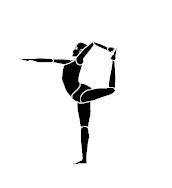Our last in-person classes at the studio were on March 15, 2020. I expected we would take a two or three week break and then resume classes as if nothing had happened. Clearly, I cannot predict the future.
Instead, we began living in a world where time seemed to pass slowly, but, without events to connect to our days, time also flew by. Suddenly, and yet not so suddenly, a year has passed. Many yoga studios around the country have closed, and that we have remained open is due to support from our community of teachers, students, and staff.
Last March while I was figuring out how to close the studio, Pat Pao began exploring ways to move classes online. Within days, she had created two short videos, and on March 20, she taught our first online class.
Over the next few months, more of our instructors began to teach virtual classes. Most had never considered teaching online, and it was a leap to go from the constant interaction with a class to the silence of muted Zoom streaming. Over time, our teachers became more comfortable in front of the camera as they learned how to explain and demonstrate, and also what to watch for during their classes.
Moving online was also a leap for our students, most of whom had never participated in online classes before. Finding a place to practice, learning how to use Zoom and Vimeo, plus the difficulty of learning two registration systems were all hurdles that were overcome. Now that the Zoom environment is familiar, there is chatting before classes as people meet and get to know each other.
Behind the scenes, our office staff has worked hard to keep everyone informed and the studio running. They have been at the studio for office hours, answered phone calls and emails, and delivered purchases to people’s cars.
Kathy Joyner has ghost written every weekly mass email. There have been 52 so far, and impressively, she has come up with new ideas every week. Kathy also handled closing out our interrupted Winter 2020 session and helped smooth the launch of our new registration system.
Marina Matthes has worked closely with Kathy in the office, kept our mailing list and database current, and has helped with the day-to-day bookkeeping. Plus, she designed and sewed all of the cute yoga masks.
Joanne Doolittle has written all of our Facebook posts, creatively publishing our schedule, news, interesting articles, and yoga tidbits several times a week. Additionally, she has kept our boutique supplied and is always on the lookout for new, helpful props.
The Health Advantage Yoga Center would not exist at this point without everyone’s work and participation. I am extremely grateful to all who stayed with us though the bumps of this past year. Thank you.
I am beginning to get questions about when we will reopen for in-person classes. Unfortunately, I can’t predict the future any better than I could a year ago. I hope, as our teachers and students become fully vaccinated, that we can reopen in the late spring or early summer.





